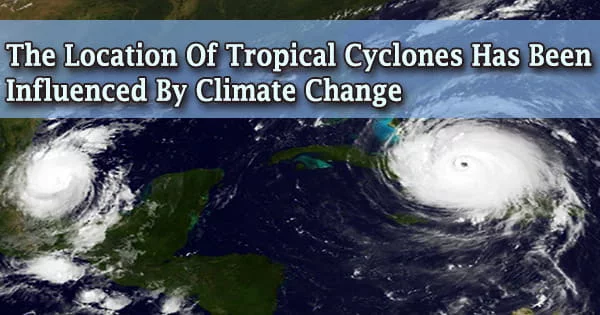According to a new NOAA-led study published in Proceedings of the National Academy of Sciences, while the worldwide average number of tropical cyclones each year has remained constant at 86 over the previous four decades, climate change has influenced the places where these deadly storms occur.
According to a new study, the number of tropical cyclones in the North Atlantic and Central Pacific has increased since 1980, whereas storms in the western Pacific and the southern Indian Ocean have decreased.
“We show for the first time that this observed geographic pattern cannot be explained only by natural variability,” said Hiroyuki Murakami, a climate researcher at NOAA’s Geophysical Fluid Dynamics Laboratory and lead author.
Murakami utilized climate models to show that greenhouse gases, man-made aerosols, such as particle pollution, and volcanic eruptions all had an impact on where tropical cyclones strike.
We show for the first time that this observed geographic pattern cannot be explained only by natural variability.
Hiroyuki Murakami
3 forces influence where storms are hitting
The upper atmosphere and the ocean are being warmed by greenhouse gases. This all adds up to a more stable environment with a lower possibility of air current convection aiding in the spawning and growth of tropical cyclones.
Particulate pollution and other aerosols contribute to the formation of clouds and the reflection of sunlight away from the planet, producing cooling, according to Murakami. Reduced particle pollution as a result of pollution management initiatives may boost ocean warming by enabling more sunlight to be absorbed.
One of the causes for the active tropical cyclones in the North Atlantic over the previous 40 years, according to Murakami, is dwindling human-made aerosols. However, because to the “calming” influence of greenhouse gases, tropical cyclones in the North Atlantic are expected to decline by the end of the century.
According to the study, volcanic eruptions have shifted the site of tropical cyclones. The large eruptions of El Chichón in Mexico in 1982 and Pinatubo in the Philippines in 1991, for example, caused the northern hemisphere’s atmosphere to cool, causing tropical storm activity to migrate southward for a few years. Since 2000, ocean warming has begun, increasing tropical cyclone activity in the northern hemisphere.
Looking ahead: Scientists predict fewer tropical cyclones by 2100 but likely more severe
According to the latest study, climate models predict that tropical cyclones would decline from an annual average of 86 to around 69 by the end of the century. The majority of locations are likely to see decreases, with the exception of the Central Pacific Ocean, which includes Hawaii, where tropical cyclone activity is expected to increase.
Despite the fact that tropical cyclones are expected to decrease by 2100, many of them will be far more catastrophic. Why? Tropical storms become more intense and destructive as sea surface temperatures rise.
“We hope this research provides information to help decision-makers understand the forces driving tropical cyclone patterns and make plans accordingly to protect lives and infrastructure,” Murakami said.





